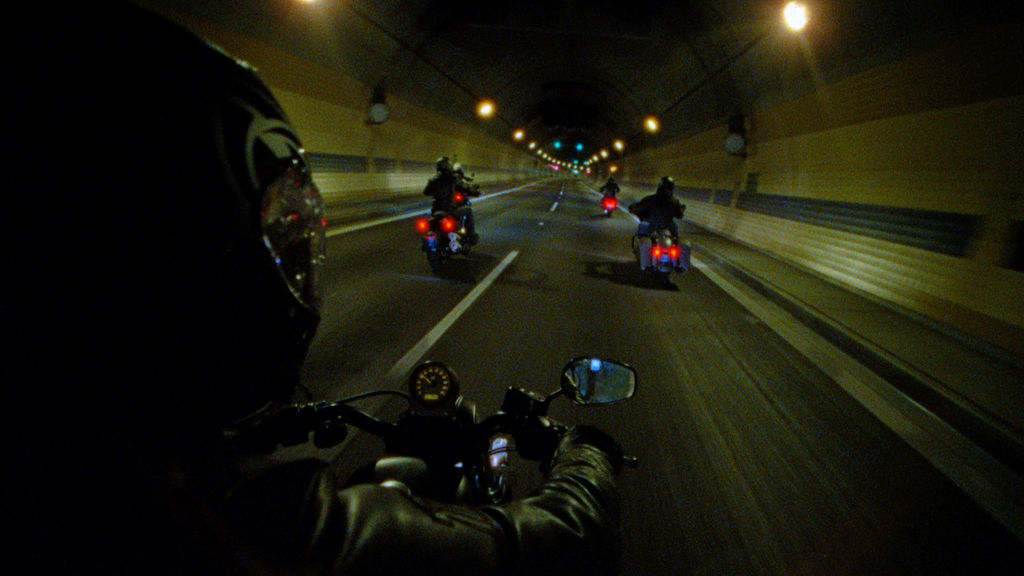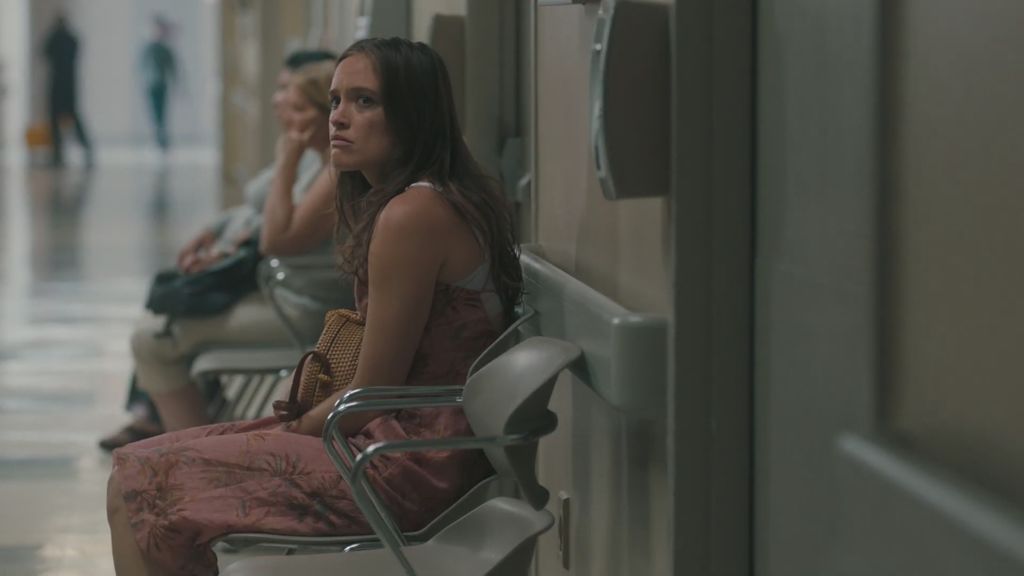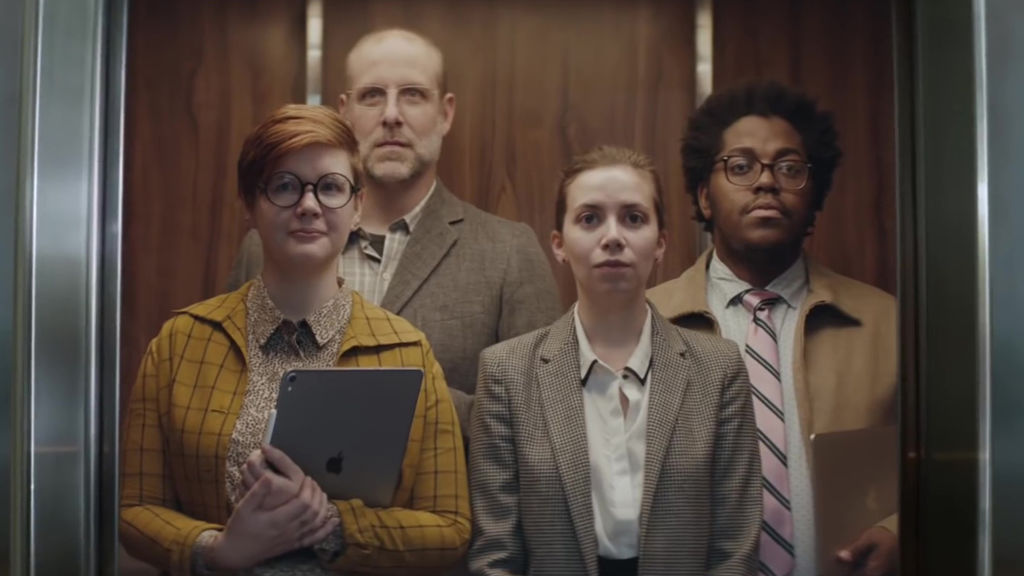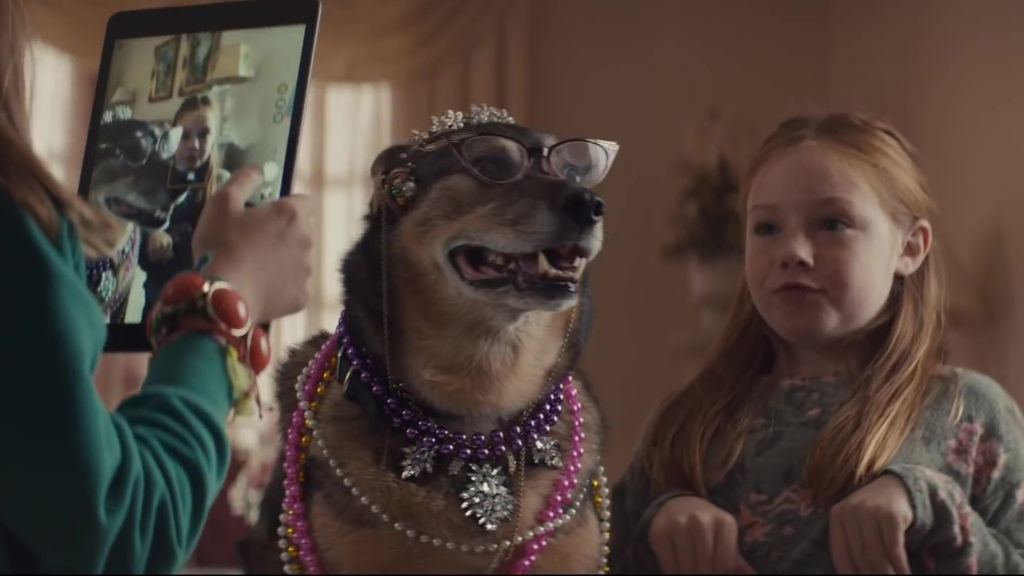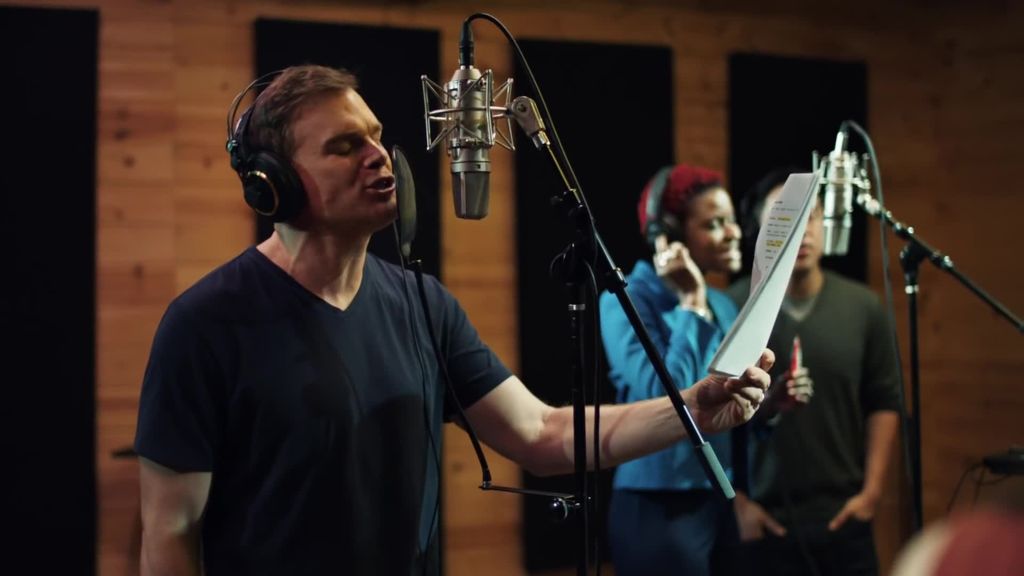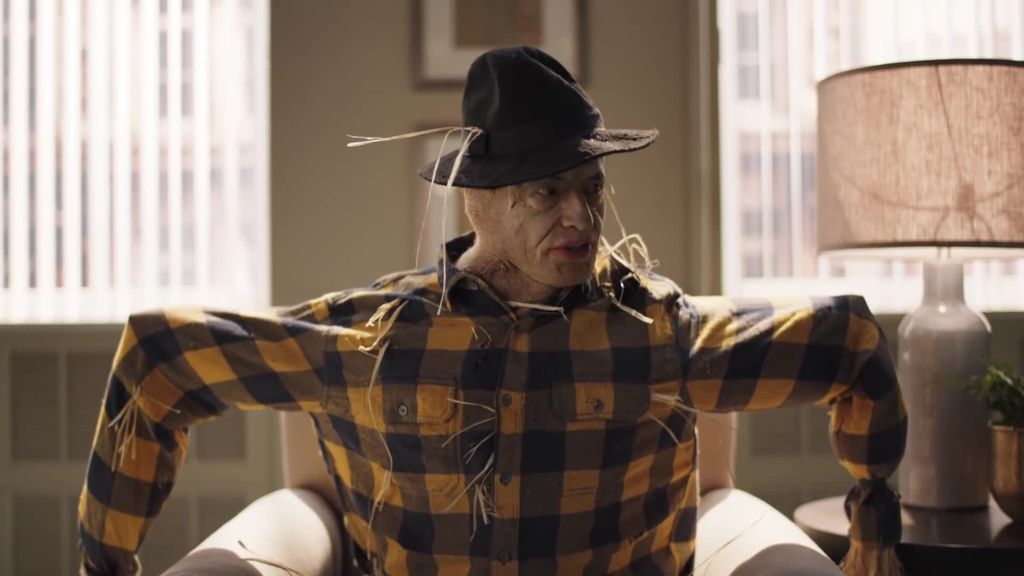Branded entertainment is the future... get used to it
Longtime friends and collaborators Patrick Milling-Smith, co-founder and CEO of SMUGGLER and Greg Shapiro, Academy Award-winning producer of The Hurt Locker and Zero Dark Thirty, recently got together with shots to have a conversation about the future of advertising, entertainment and the intersection of the two worlds.
Greg Shapiro
Branded entertainment seems to be a rather confusing phrase. What does it actually mean to you? Can you give me some good examples of branded entertainment – ones that have impressed you? And why do you think they were effective?
Patrick Milling-Smith
I’ve never been much of a fan of the term branded entertainment or even worse, branded content. It sounds a bit like an excuse or perhaps even an apology, for something that’s not actually entertaining. It’s also a little confusing as to what branded entertainment actually is. I feel like everything we create in advertising can fall under that title - including the 30-second or 60-second spots. They have to be entertaining, for the most part, to break through the clutter and of course, they are always branded. My belief, or perhaps hope, is that the line between marketing and entertainment is being blurred more and more as time goes on and we have entered a time when both the entertainment industry and the advertising industry need one another.
That said, branded entertainment is happening, almost organically.
Brands have the ability to finance entertainment properties of course have their own brand equity and the power and reach to amplify and engage a larger audience. The brands need to engage the entertainment industry and adopt best practices in order to tell stories and create experiences that can properly resonate, entertain, and engage audiences. It feels like, with so much content available across the board and so much media competing for an audience’s time and attention that no one can take anything for granted anymore. Brands increasingly need to create stories that can stand up to, and compete with, apps, shows, games, and experiential advertising. Why not use the inherent equity, insights, and understanding of their consumers to create marketing that is of value and appreciated by an audience? Entertaining marketing can only enforce the relationship, loyalty, and engagement with its audience.
With so much systemic pressure baked into the ad industry, it feels like people are risk-averse and simply double down on what’s been the norm for decades.
Anything else in 2020, feels lazy, inefficient, and short-sighted. We are way past the time that an artist working with a brand would be labeled as having sold out. A brand is now more of an extension to someone’s identity or in classic entertainment a nuance to understanding a character. Brands can now legitimately and comfortably sit in the ecosystem of the entertainment landscape. At a time when audiences are literally paying to avoid dry, traditional marketing and can easily skip commercials, branded entertainment has long been talked up as “the next big thing.”
Harley Davidson – Breathe
Rainn – Wait
GS: So why aren’t advertisers doing more of this? If everyone can skip ads now, you’d have thought we’d have seen a deluge of branded entertainment projects like these in recent years?
PJMS: Most of the advertising industry is still set up for the classic media buy, and that’s only now starting to shift but it still feels like very early days.
But the 30-second and 60-second commercial format is and will continue to be a powerful medium in which to entertain. Great commercials, like John Lewis’s Christmas campaigns, can also be stunningly successful, partly because they’re as gratifying as anything that TV or film can offer. There’s still a great demand for the 30-second spot, and there are more places than ever to play it.
The challenge is to successfully steer a project to the screen, while ensuring the underlying idea doesn’t have its guts ripped out along the way.
The average tenure for a CMO is under half that of a CEO or other execs. There seems to be little stability in that role, to be able to innovate and take some risks creating branded entertainment projects. With that much systemic pressure baked into the ad industry, it feels like people are risk-averse and simply double down on what’s been the norm for decades. Strong entertainment properties, good longer-form storytelling, take time, knowhow, and investment to produce.
That said, branded entertainment is happening, almost organically. And clients are more comfortable talking about it and wanting it. AT&T spent a huge amount of money on a documentary film. I don’t think there was ever going to suddenly be a switch flicked or a lever pulled and suddenly branded entertainment was the new normal. It’s all by degrees and you can see more clients getting used to it, comfortable with the idea of it and slowly there are successes that can be pointed to and emulated.
GS: What’s your experience of working on branded entertainment projects been like?
PJMS: There’s that term again. Maybe we can come up with a better description in time. Our experience in producing entertainment for brands is pretty wide at this point but the bulk of it is TV commercials. The best examples of which are the spots that have some ambition, charm and story to them. Last year's Apple spot The Underdogs with director Mark Molloy feels like a perfect example of what we are trying to describe. It’s about three minutes long and is stacked full of Apple products while telling a great story with memorable characters. It’s a good test case actually as it’s ripe for a ‘follow up’, sequel, so to speak, bringing back the same team of characters for another episode of sorts.
I don't think brands need to hide the fact that they are paying for the piece. I think that should be embraced fully.
A more unusual or unexpected example of a brand being brave and innovative and leaning properly into the entertainment side of things would be the SKITTLES BROADWAY Show we made with DDB NY and Mars, starring Michael C. Hall. It was a Skittles alternative to running a Super Bowl ad. They put the media dollars saved towards diving in fully and committing to producing a musical. The show was only scheduled to run for a night but made a very big splash and honestly was one of the best shows to open on Broadway in years. This, for us at SMUGGLER, was a great example of how the entertainment world and the marketing world can combine to great effect. We could draw on our past Broadway experience to, I hope, give the agency and client some confidence in the process, and whilst it was all a bit of a scramble, it really was a very gratifying team effort and experience.
The lesson to be taken from it is everything we make should be entertaining. Otherwise, you're lying to yourself.
Apple – The Underdogs
Apple – The Surprise
GS: Was it very different from producing commercials? Does branded entertainment require a different kind of skill set? What advice can you give any clients or execs looking to create things in this space?
PJMS: Well to start with, I think that commercials producers are well placed to produce branded entertainment when the idea is right. We generally understand how to create unique pieces of entertainment and are used to juggling the complex needs of clients. As always, the challenge is to successfully steer a project to the screen, while ensuring the underlying idea doesn’t have its guts ripped out along the way. The process often feels as much about protecting as creating. I think it’s important that everyone’s needs are properly considered and planned for early in the process. As important as it is to get the entertainment value right, it’s a fool's errand if the brand's objectives are not met and elegantly baked in from the start.
Brands increasingly need to create stories that can stand up to, and compete with, apps, shows, games, and experiential advertising
I don't think brands need to hide the fact that they are paying for the piece. I think that should be embraced fully. Just give people something great and don’t treat people like they're stupid. No one needs to know that the protagonist has a can of Pepsi every three hours. Less is definitely more. I think this will come with more confidence in time. Nothing makes something less entertaining than a feeling of it being disingenuous or heavy-handed.
Against a crowded field of content, anything funded by a brand has to be entertaining. It has to match the ideas, production values and artistry of the wealth of programming that audiences are now able to watch.
Strong entertainment properties, good longer-form storytelling, take time, knowhow, and investment to produce.
The number one rule here is to be honest with yourself. You need a good ‘bullshit meter’, and a desire to make something that truly interests you and that you would actively choose to watch. Whatever we’re working on, the question we always ask ourselves is: ‘Does this have a reason to exist?” This is largely born out of the belief that you can’t expect to form a connection with people by simply interrupting a show they love with a commercial they would happily – and can easily - avoid.
Skittles – The Broadway Musical
Skittles – Advertising Ruins Everything
Skittles – Therapist
Patrick Milling-Smith
How do you feel about watching branded entertainment? If you know something is funded by a brand, are you happy to tune in? Any brand funded projects that stand out for you?
Greg Shapiro
As an audience member, I’m really not sure why I would care if I was watching content that was paid for by a studio or by a brand. As long it was engaging and entertaining. We’re really not talking about communist agitprop here. Disney is a brand. Sony is a brand. The film and television divisions of those corporations have a great deal of editorial and creative control over their content, but fundamentally they are still brands. Coca Cola had a fairly disastrous run when they bought Colombia Pictures in the 1980’s. But if Coca Cola wanted to make a great piece of television with an international cast that reflected their corporate values and it was fun to watch, I would be quite intrigued to tune in.
I think that TV and Film producers have been dying to have brands fund their content
In terms of the brand-funded content, I know we all refer back to the BMW Film Series, which was pretty great at the time and I think it still holds up. John Hillcoat recently directed a film for Montefiore, called Corazon that starred Ana De Armas and Demian Bechir that I thought was excellent. But both of those examples are short-form content. With respect to feature films, the landscape is dotted with near misses or abject failures. But the sample size is so small I don’t think you can properly judge its value until more brands align with more filmmakers and take more chances.
Television is a different medium and historically brands have supported content financially since the beginning of the television era, whether through sponsored shows or the entire advertising-based model. Right now most of the streaming platforms exist on a subscription-based model, so advertising support is less of a factor for them.
PJMS: What about working with a brand on a film of yours? Would you feel comfortable about having a brand as a funding partner? In what circumstances would it be right to do so?
GS: Not only would I feel comfortable with having a brand as a funding partner, I would welcome it. I’ve been an independent producer for over 20 years. I’ve dealt with some of the shadiest outfits imaginable, most of which are no longer in business. Brands have much longer half-lives than film financiers. That creates accountability and stability and that is always to the advantage of the creative team.
Historically brands have supported content financially since the beginning of the television era, whether through sponsored shows or the entire advertising-based model.
I do have one unique experience of working with a brand on a film, only it was the creative team who made the approach and not the brand who initiated the project. It was a film called Harold and Kumar Go To White Castle, and it was so popular it spawned two sequels. The screenwriting team Hurwitz and Schlossberg wrote one of the funniest scripts I had ever read, and it had White Castle not just written into the script, but literally in the title. We didn’t really have a good backup plan- Harold and Kumar Go To Krispy Kreme doesn't have the same impact- so we had to convince White Castle to entrust us with their name, which was challenging at first because there is drug use in the script. In fact, the entire movie is basically about smoking marijuana. But it also wasn’t hard for them to tell that the film was a love letter to the fast-food chain, and in the end, they not only gave us consent, then supplied us with all the materials we needed to build a White Castle in Toronto where we shot the film.
They also enthusiastically supported a cross-promotional marketing campaign with the studio. I don’t have statistics to share, but I believe the film added to their brand awareness in a very positive way, and anecdotally I have heard that sales went up significantly after the film was released. Again, even though White Castle didn’t originate the project or directly pay for it, they took a big gamble and it clearly paid off.
Credits
powered by
-
- Production Company SMUGGLER
-
-
-
Unlock full credits and more with a Source + shots membership.
Credits
powered by
- Production Company SMUGGLER

Credits
powered by
- Production Company SMUGGLER
PJMS: Do you sense that TV and film producers are open to working with brands more to fund their content?
GS: I think that TV and Film producers have been dying to have brands fund their content. Most producers will take money from anywhere including sovereign states and oligarchs. The writers and directors are probably more circumspect and rightfully so. For them, it begins and ends with having creative control. But compromise is part of the creative process, and most filmmakers give up a great deal of control implicitly or explicitly to studios and networks anyway, so it’s really about having a trusted partner, and a relationship with the brand where the expectations are set very clearly. It’s also a two-way street. The brands are making serious financial commitments and they need to believe that not only will the filmmaker not be cavalier with the creative custody of their brand, but they also need to be convinced that the filmmaking team understands the history of the brand, it’s management and clientele, what makes it’s unique, and precisely what the project is meant to achieve.
Harold and Kumar Go To Krispy Kreme doesn't have the same impact.
Not in terms of gaining the maximum amount of eyeballs. That’s obvious. In terms of the messaging that the brand wants to extend to the audience. I know that sounds reductive, but it’s also essential. The filmmakers main objective is to create a great piece of content. But unless it furthers the objective of the brand, the experiment will fail. I could go back to Harold and Kumar. It was racy material, but it was also an unqualified love letter to the restaurant franchise. Which is why both sides won on that one.
PJMS: Are you often or even ever approached by brands and advertisers to help fund your projects? Would you like to be?
GS: As a producer, I tend to work with writers and directors as a first step in generating the content, whether its for film or television. But then we need to shop it around for financing. If we knew from the beginning that we had financing, that would make a significant part of the process much easier. So if there are any brands or advertisers out there reading this, but as for the question about whether I would like to be approached, my answer is an unqualified yes.
At the very least, I would love to be engaging in these conversations. I hope that doesn’t sound too solicitous. I genuinely believe that there is great untapped potential in the branded content space.
)


